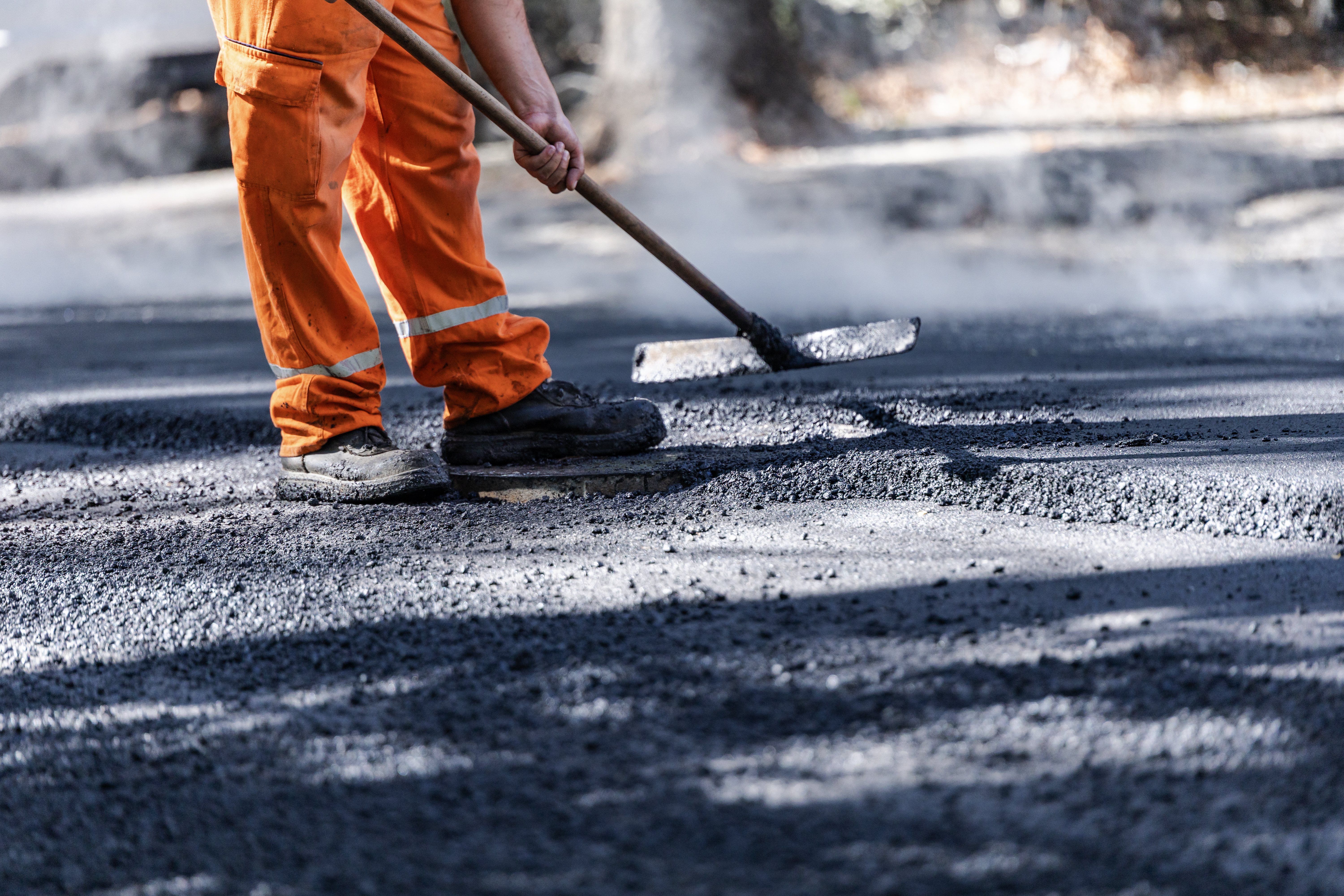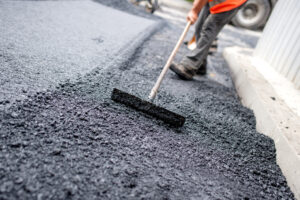If you’ve ever wondered what makes asphalt so tough and reliable, the secret lies in something called asphalt aggregate. It might sound a bit technical, but we’ll break it down in a way that makes sense. Think of aggregate as the backbone of asphalt, it’s what gives it strength, stability, and that smooth finish you expect on driveways and roads. In this blog, we’ll cover the basics, talk about the different types, and explain why the right choice can make or break your project.
What Is Asphalt Aggregate?
At its core, asphalt aggregate is the collection of crushed stones, gravel, sand, or other materials that make up the bulk of an asphalt mixture. While bitumen (the black, sticky binder) holds everything together, the aggregate provides volume, structure, and load-bearing capacity. Without aggregate, asphalt would be little more than sticky tar—it’s the rock particles that make the finished product functional and durable.
The typical asphalt mix used in road construction contains about 90–95% aggregate by weight and only 5–10% bitumen. This means that the majority of the pavement is rock and sand, which might surprise people who think of asphalt as a simple black tar.
The aggregate isn’t just a filler. It’s a critical component that determines the pavement’s integrity, influences traction, and affects how the surface handles water. Without high-quality aggregate, asphalt would be little more than a soft, flexible coating that couldn’t withstand the stress of its modern-day responsibilities. The right aggregate blend delivers a top-notch performance that resists traffic, weather, erosion, and time. The type, size, and quality of the chosen aggregate have a direct impact on the finished pavement, making it a key factor in any paving project.
Types of Asphalt Aggregate: Finding the Right Fit
Not all aggregates work the same. As we mentioned briefly, the type of aggregate used can make a dramatic difference in the asphalt’s properties. The best fit for your project isn’t always crystal clear; it can depend on the pavement’s intended use, local climate, load expectations, and budget. Here are the most common types of aggregates used in asphalt paving:
Crushed Stone
Made by mechanically breaking down rock, typically granite, limestone, or basalt, crushed stone has sharp edges that interlock tightly. This makes it exceptionally strong and stable. Crushed stone is used mainly in highways, interstates, and other heavy-duty roads that see frequent truck traffic.
Gravel
Gravel is naturally rounded, often sourced from riverbeds. While it doesn’t lock together as tightly as crushed stone, it’s easier to work with and creates a smoother surface. It’s commonly used for driveways, residential streets, and recreational paths where traffic is lighter.
Sand
Sand is used to fill the space between larger aggregates, helping with compaction and mix workability. Though it doesn’t add much structural strength, it reduces air pockets and increases the overall cohesiveness to produce a dense, uniform pavement surface.
Slag
Slag is an industrial byproduct from metal smelting that’s crushed into a usable aggregate. Known for its durability and rough texture, slag forms a strong bond with bitumen and performs well under pressure. It’s often used in heavy-duty or sustainability-focused projects.
Recycled Asphalt Pavement (RAP)
RAP is made by grinding and reprocessing old asphalt. It helps reduce raw material costs and its environmental impact while still offering reliable results. It’s beneficial for overlays, parking lots, and secondary roads.
Recycled Concrete Aggregate (RCA)
RCA is produced by crushing concrete from demolished structures. Though slightly more absorbent than natural aggregate, it performs well in base layers, temporary roads, and budget-conscious projects aiming for sustainability.
Each of these aggregates brings unique benefits and limitations. The key is choosing the right combination for your specific job.
Choosing the Right Aggregate for Your Project
You wouldn’t use the same materials for a rural bike trail as you would for an airport runway. That’s why selecting the right aggregate isn’t just about what’s available; it’s about matching performance needs with material characteristics.
Start by asking:
- What kind of traffic will this surface see?
- How much weight does it need to support?
- What’s the local weather like?
- How long should the pavement last?
- Is sustainability or cost a major factor?
For example, crushed stone might be the best choice for a commercial parking lot exposed to delivery trucks and snowplows, while gravel or recycled asphalt might be more appropriate for a low-traffic residential path.
In addition to the type of aggregate, particle size and gradation (distribution of sizes) play a huge role in performance. A well-graded mix contains smaller particles that properly fill the gaps between larger ones. This harmonious relationship makes a dense, stable surface that’s more resistant to shifting, cracking, and erosion. These three factors of asphalt aggregate–type, size, and gradation–together give the finished asphalt its strength and durability to withstand everyday use.
How Aggregate Affects Performance
You could have the best binder in the world, but if your aggregate is poorly selected, the pavement won’t hold up. The quality, shape, and composition of the aggregate have a direct impact on how asphalt performs over time, especially under stress from weather and traffic. Here’s how aggregate directly affects pavement performance:
Load Distribution: Coarse, angular aggregates like crushed stone create a stronger internal structure. This helps distribute vehicle loads more evenly across the surface, reducing rutting, fatigue cracking, and long-term deformation, especially on high-traffic roads.
Surface Texture: The shape and roughness of the aggregate determine how well tires grip the pavement. For example, highways and airport runways rely on skid-resistant aggregates to improve traction and driver safety, particularly in wet or icy conditions.
Temperature Resistance: Certain aggregates expand or contract significantly with temperature changes. Materials like granite, which are more thermally stable, help maintain pavement integrity in regions with extreme seasonal swings or high heat.
Moisture Resistance: Porous or absorptive aggregates can retain water, leading to problems during freeze-thaw cycles or wet seasons. Well-chosen, low-absorption aggregates promote proper drainage and reduce the risk of cracks, potholes, and structural failure.
Longevity: Ultimately, high-quality aggregate contributes to a surface that lasts longer, requires fewer repairs, and provides a smoother, safer ride. It’s a key factor in maximizing return on investment for any paving project.
Although aggregate may not be flashy, it’s arguably the most important ingredient in asphalt. Making up 90-95% of the asphalt pavement, aggregates provide the strength and durability to hold up heavy vehicles, resist harsh weather, and withstand the test of time.
Look No Further for High-Quality Asphalt Maintenance & Repairs
Picking the right aggregate mix can mean the difference between a surface that lasts decades and one that needs constant repairs. Whether it’s crushed stone for strength, gravel for a smoother look, or recycled materials to save on costs, choosing wisely pays off big time. At Superior Asphalt, we know the ins and outs of asphalt aggregate. We’ve been in the game for years, and we’ve seen firsthand how the right choice can make a world of difference. We offer high-quality maintenance and repair services, helping you keep your surfaces looking like new. Whether it’s addressing small issues before they become big problems or being proactive with preventative maintenance, our team of experts has you covered. Contact us today to learn more!



